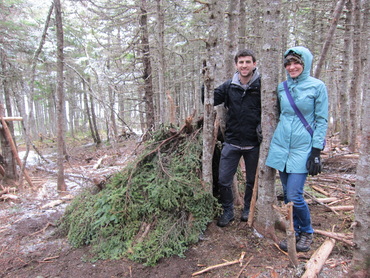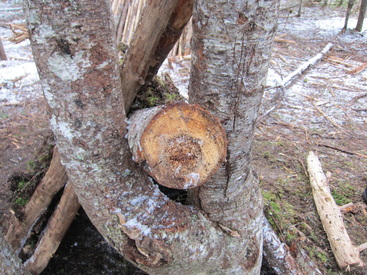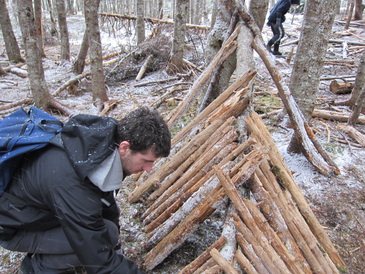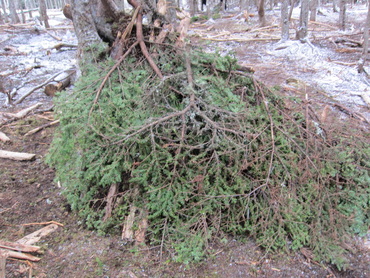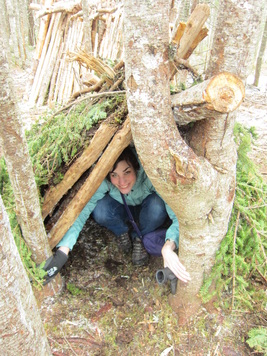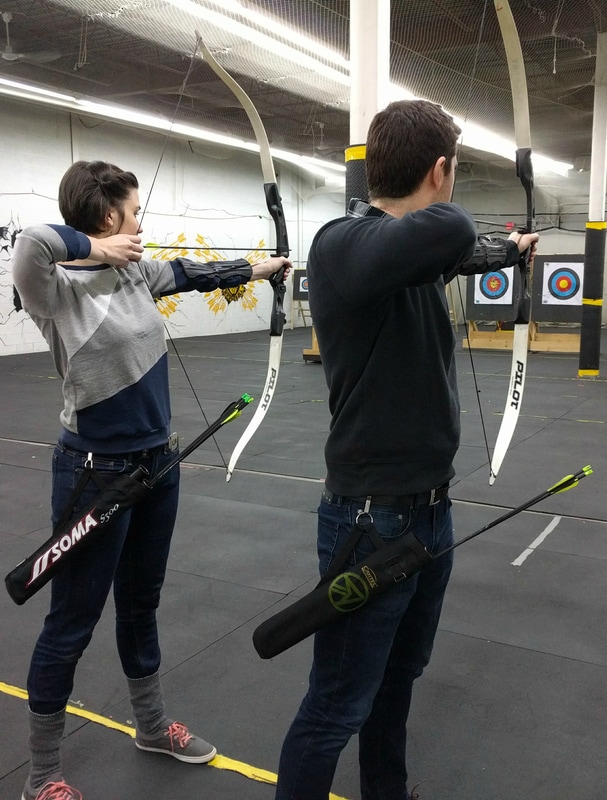We weren't entirely sure what we'd signed up for, but in the end it turned out to be a very practical course on surviving in the wild, with very little equipment, in the terrifying scenario that you get lost on a hike/expedition. In somewhere as sparse and wild as Canada, it's pretty comforting to know this kind of thing.
The course started off indoors, where we learned a bit about preparing a trip plan and the importance of having one. If you're off on an expedition, its good to leave a copy of your trip plan with someone who can come looking for you if you're not back when expected. It reminded us of the film 127 hours...
We then headed outside for a short hike through the park, before starting our first task: building a shelter out of sticks, moss and boughs. Here's a run-down of the process.
Step 1: When you’re choosing a location to build your shelter, make sure to consider the prevailing winds and avoid building your shelter with the door facing into the wind. Also try to build it somewhere on high ground, or on land sloping downwards so that water won’t pool in your shelter.
Step 2: Find an appropriate tree to use to build your shelter. Look for a tree that has split into two trunks at about waist height. Then find a fallen tree or log that is about twice your height. This log fits into the U shape of the tree and is the backbone for the structure.
After lunch we spent some time building fires. Unfortunately, fire-starting turned out to be a momentous task because all of the wood in the area was damp. We laid out the framework for the fire, then tried to start a flame going with a flint but the sparks wouldn't catch anything. Then we progressed to using matches. 20 minutes later, when none of the groups could get a fire started, we had to progress to using paper and bits of dry wood. Even then it was tough to keep going.
Once inside, we went through a survival scenario in groups and had to rank the items that you were given in order from most important to least important. It was a great exercise to bring everything we had talked about together, and we realized that our answers would have been completely different at the beginning of the day - proof that we learned something!
At the tail end of the course, we also went over some basic map and navigation information. Most of it was familiar to us, but neither one of us had heard of the UTM system, which is often used instead of latitude and longitude. We had no clue about it. So yeah, we learned a lot throughout the day.
